Cannizzaro Family Chart
Cannizzaro Family History
Cemeteries
Causes of Death
Photos
Documents
Family Recipes
DNA Testing
Email Me
MILITELLO and GRAMMICHELE
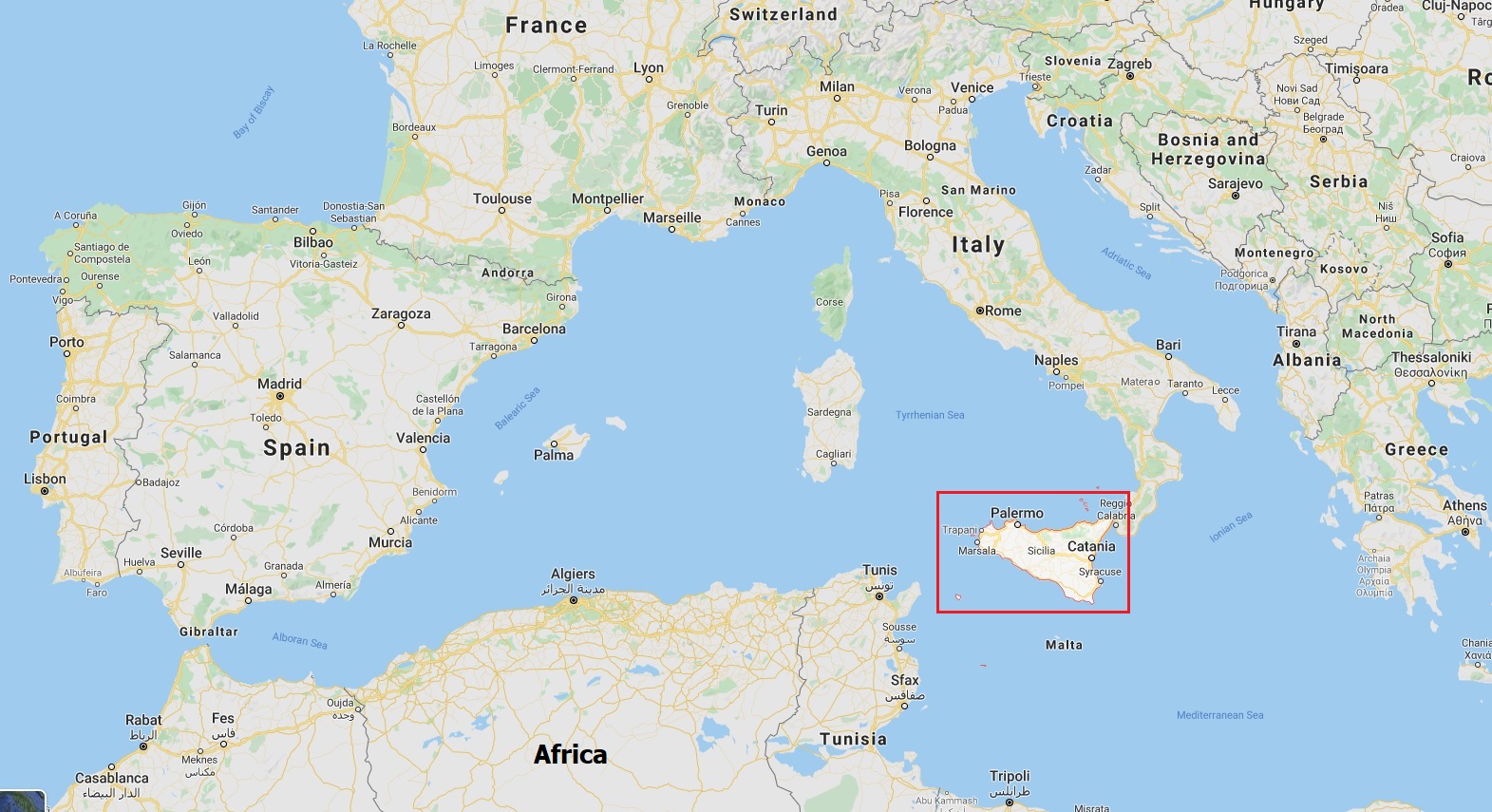
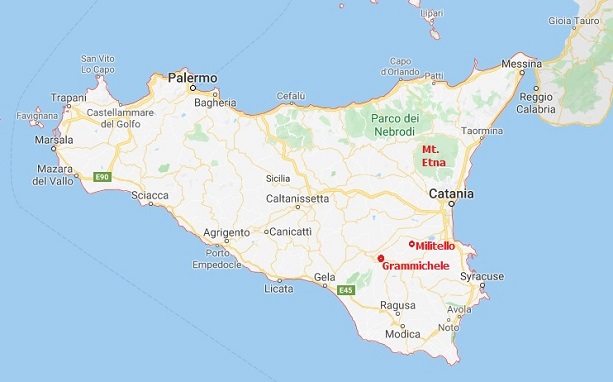
Militello is 50 miles from Mt. Etna and 15 miles from Grammichele.

Our Cannizzaro Ancestors

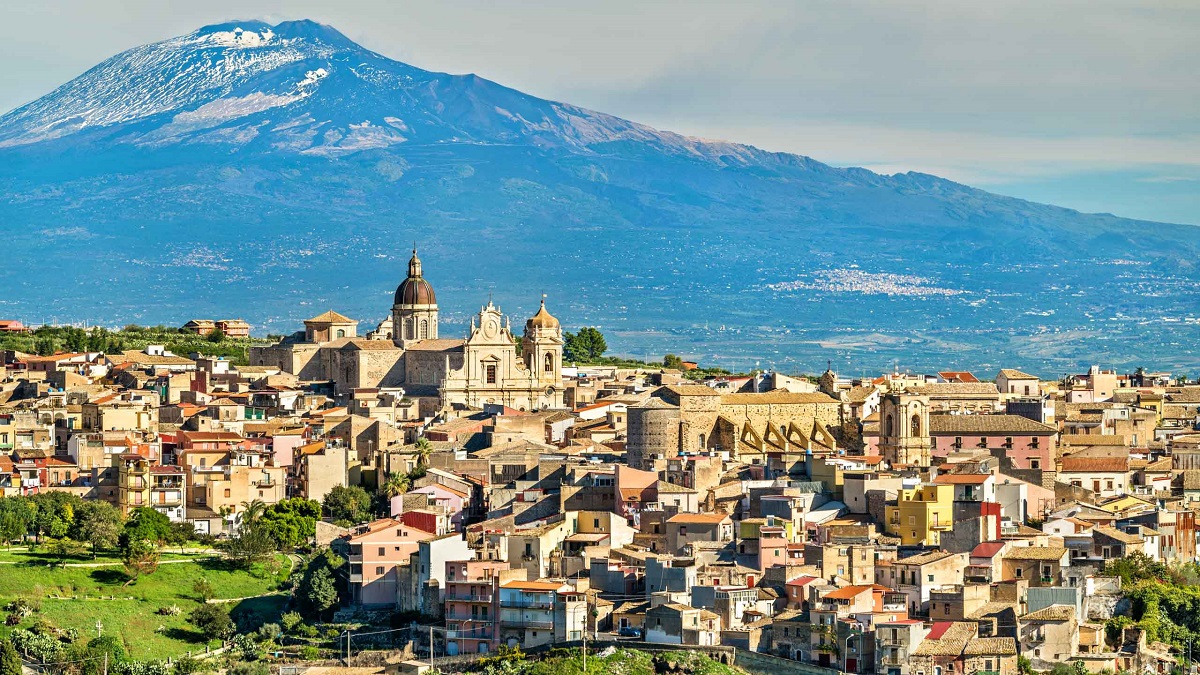
That's the "Chiesa Madre di San Nicolo e del Santissimo Salvatore" (Mother Church of San Nicolo and the Holy Saviour)
rising prominently in the background, and Mount Etna 50 miles to the north.
According to tradition the town that is now Millitello was founded by the Roman magistrate Marcellus during the siege of Syracuse in 214 BC. Syracuse is about 50 miles southeast of Militello on the eastern coast of Sicily. Some scholars believe the name Militello comes from a surviving Latin text describing a land called Militum Tellus (land of soldiers). The text tells the story of a group of Roman soldiers who were seeking refuge several miles west of an outbreak of malaria in a swamp (the present day town of Lentini), about 15 miles east of Militello.
Sometime between 330 AD and 902 AD, the area was settled by Byzantines. Byzantium, or the Eastern Roman Empire, was centered in Constantinople, which today is Istanbul, Turkey. This is evidenced by remains of religion-inspired frescoes discovered in several caves around present day Militello. The area was later occupied by Arab Muslims (827 AD - 1061 AD). In 1061, the Normans (French Vikings) invaded and routed the Muslims. The golden age of Militello was from 1571 to the early 1600s, particularly under the government of Prince Francesco Branciforte (1575-1622). Throughout these centuries incredible buildings were constructed, including public gathering places, churches, administrative buildings and more. In fact, Sicily's first ever printing house was established in Militello.
Then, the devastating earthquake of 1693 destroyed at least 70 towns and cities in southeastern Sicily, including much of Militello and most of Grammichele. It seriously affected an area of 2,200 square miles and causing the death of about 60,000 people. The earthquake was followed by tsunamis that devastated the coastal villages on the Ionian Sea and in the Straits of Messina. Almost two-thirds of the entire population of Catania were killed. The extent and degree of destruction caused by the earthquake resulted in extensive rebuilding of the towns and cities of southeastern Sicily, including Militello and Grammichele, in a homogeneous late Baroque style, described as "the culmination and final flowering of Baroque art in Europe".
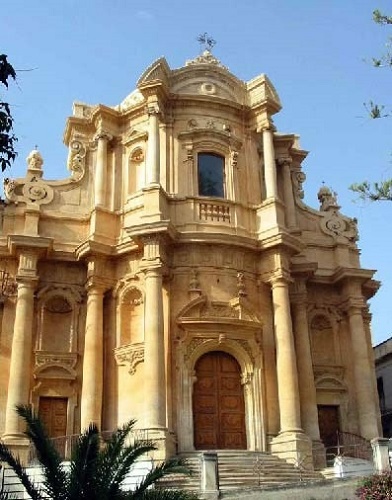
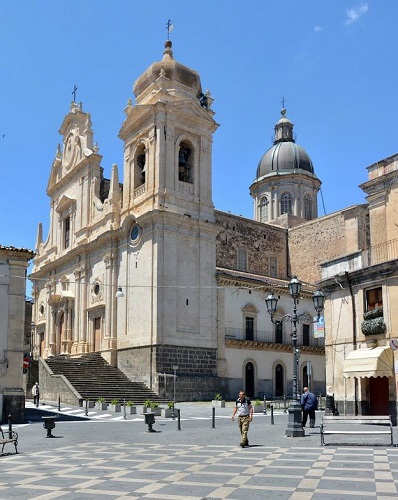
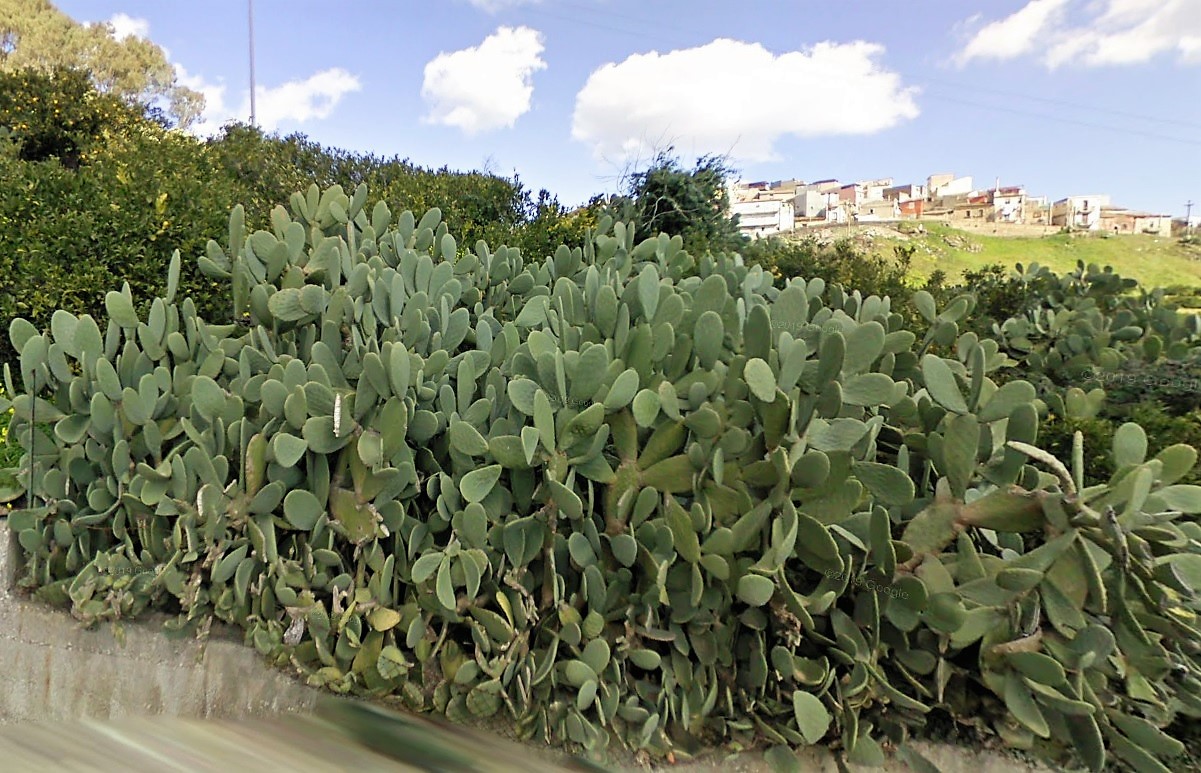
Today the quaint village is officially known as Militello in Val di Catania. It has a population of about 7,000. It is 1,355 feet above sea-level. It has been named one of several UNESCO World Heritage Sites in Sicily. Besides its architecture, Militello is known for its confectionery delights. Almonds and mulled wine are the main ingredients of all sorts of cakes, hence their scrumptious Mediterranean taste. Militello is also well-known for its prickly pear mustard, made from the abundant prickly pear cactus.
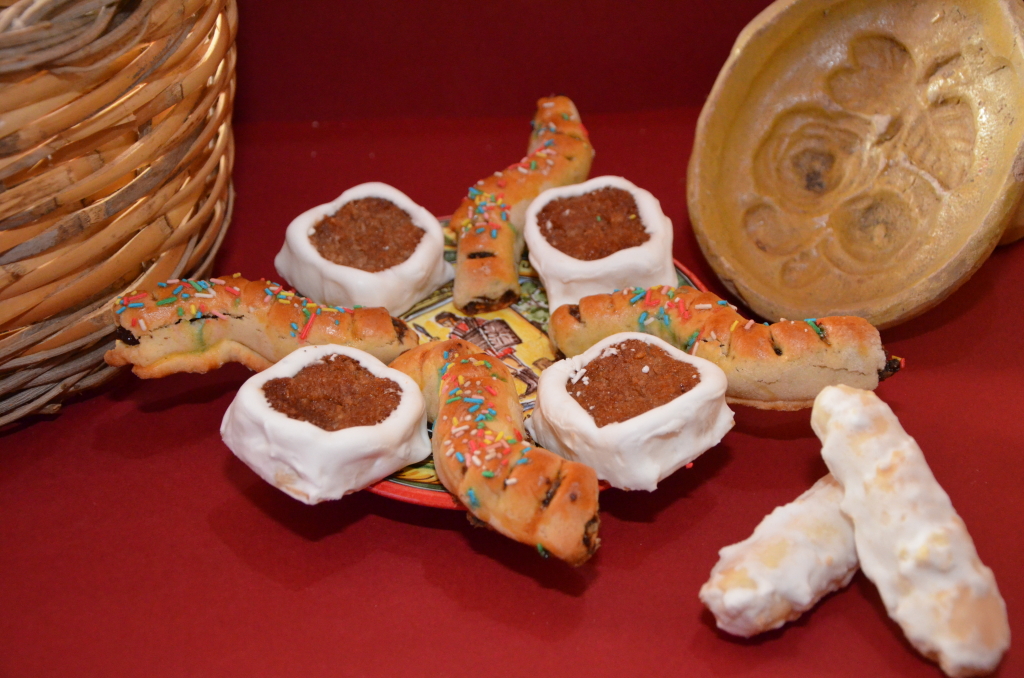
The Cassatelle della Zia Monaca, shortbread cookies filled with almonds, jams, liqueur, cinnamon and cloves; the prickly pears mustard, dried or fresh, celebrated in all its variations in the famous Festival of Mustard and prickly pears, and still the "fasciatelli", the "pipirata", the "muscardini", the "cannoli" filled with ricotta cheese, the "scacciata" (a sheet of fragrant bread dough stuffed with wild vegetables, olives, sausages or other ingredients) and the red oranges of Sicily. Here the almond or lemon flavored granita is still made as in ancient times.

Our Russo Ancestors
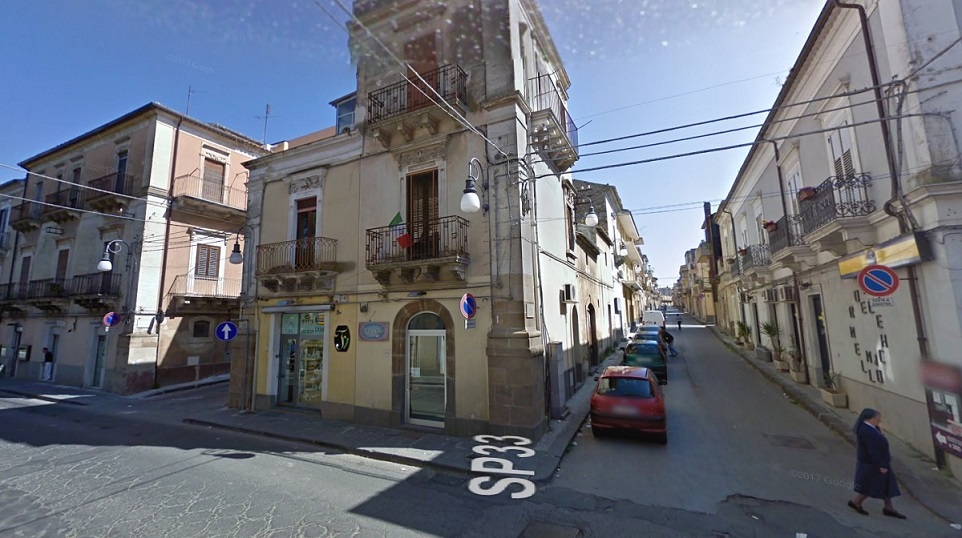
Grammichele (Sicilian: Grammicheli, Greek: Echetle (meaning "plowshare"); Latin: Echetla, Ochula; Medieval: Occhiolà) is a town and comune in the Metropolitan City of Catania in Sicily, southern Italy. It is located at the feet of the Hyblaean Mountains, some 15 miles from Militello. It rises over an internal hilly area, 1700 feet above sea-level.
The original settlers of what is today Grammichele, were the The Sicels, an Italic tribe who inhabited eastern Sicily during the Iron Age. The Sicels gave Sicily the name it has held since antiquity, but they rapidly fused into the Greek culture. The original Greek name of the settlement was Occhialà. Greek civilization prevailed in the area from the 5th century onwards.
Following the horrible earthquake of 1693 that completely destroyed Occhialà, the survivors built a new town and named it Grammichele, after St. Michele, in the hope that the saint would protect the new town from further disasters. Grammichele rose again by the will of Carlo Maria Carafa, the Prince of Butera, a great scholar, patron and lover of arts and sciences. He laid the foundation stone of the new town a few weeks after the earthquake, not far from the ruins of Occhialà which can still be visited today.
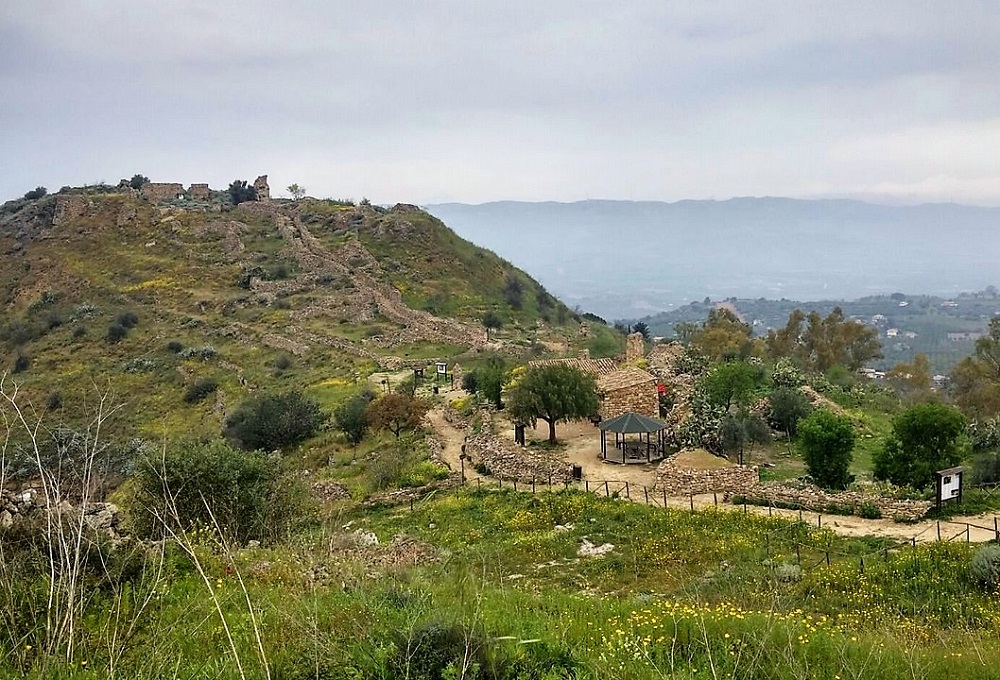
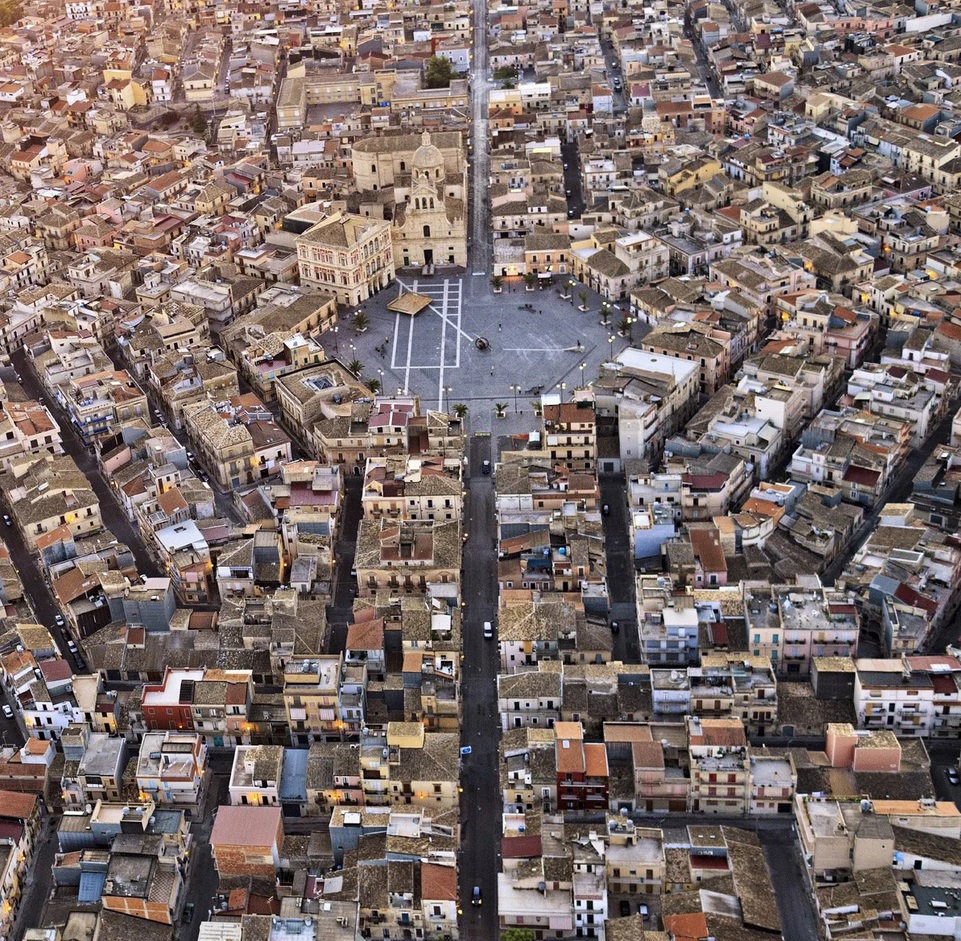
Its beautiful hexagonal square, the heart of the city, is well-known and studied in the most important Schools of Architecture and by the most eminent urban planners, as well as the entire urban grid that radiates around it. It is one of the few towns in the world to have the unique hexagonal layout. A huge monumental bronze statue, a work by the Turkish artist Murat Cura, stands in the middle of the square. The sculpture, an integral part of a big sundial realized under the advice of Professor Giovanni Brinch, symbolizes Time and depicts a kneeling man enclosed within a series of circles as in an Armillary Sphere that traps him in his own time.

The plan of the city, called "ad exagonum", was designed by the Prince himself, and carved by the architect Friar Michele da Ferla on a slab of slate which is still preserved in the Town Hall. The large hexagonal square is overlooked by the Town Hall, designed by Carlo Sada in 1896, which keeps inside a precious small museum of Archaeology, and by the beautiful church of San Michele, whose construction was funded by the heirs of the Prince of Butera.
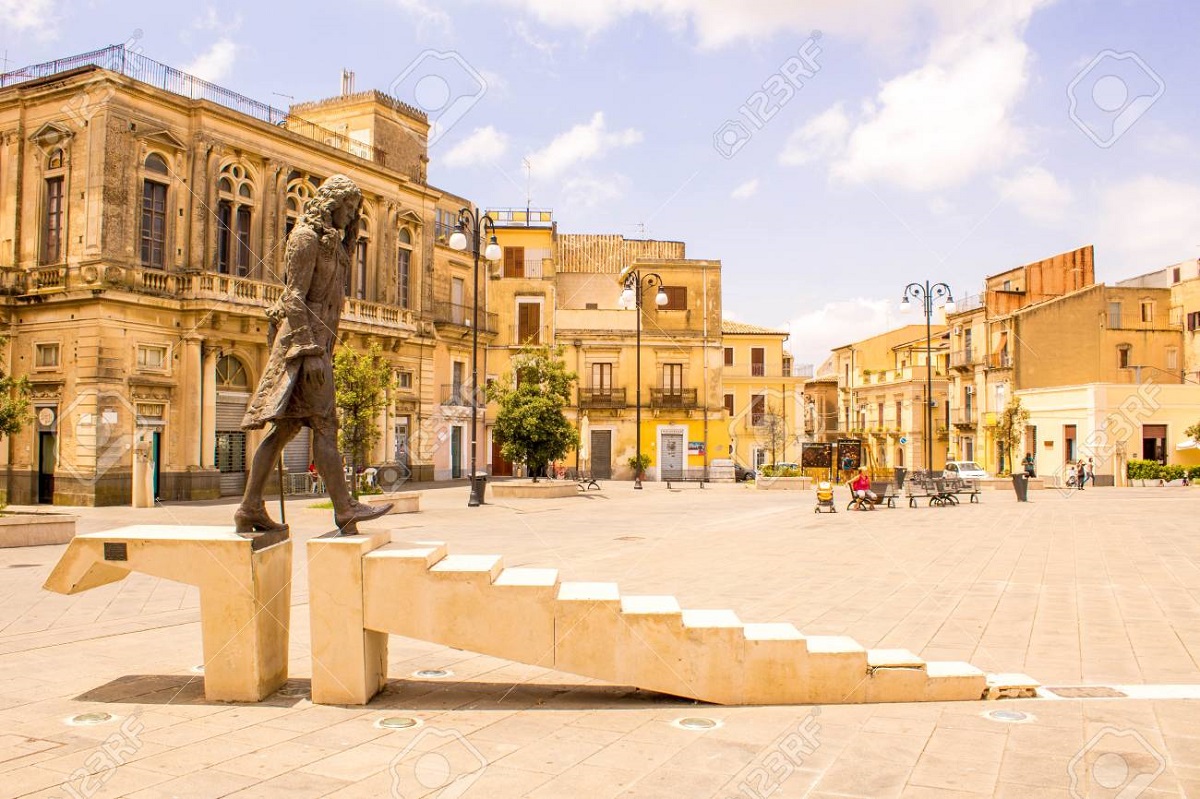
A bronze statue of the Prince of Butera welcomes visitors in the hexagonal square. The sculpture is placed on a base made up of a series of steps symbolizing the virtues of knowledge: philosophy, religion, science, politics, literature and art. The monument is a tribute to the Prince's love for knowledge. The sculpture was created by Paul Guarrera, representing the city founder while going down a stair leading to the heart of the city. Looking closely, you can see that the left leg seems to rest still on Occhiolà, followed by a void symbolizing the earthquake and representing the past that cannot return anymore, while the right leg is already stretched to the stairs leading to the new city, representing the future. At the foot of the stairs, a bronze plaque commemorates the edict pronounced by the Prince on the occasion of the laying of the first stone.
Today, Grammichele has a population of about 14,000. Compared this to Militello with 7,000. It is 1,700 feet above sea-level, a little higher in elevation than Militello (1,355). Grammichele is outstanding for the production of grapes, olives, Indian figs, citrus fruits, and cereals.